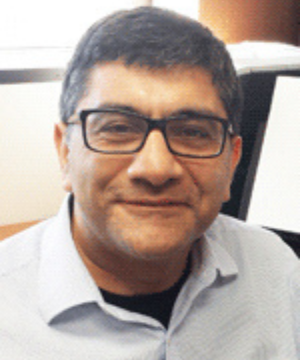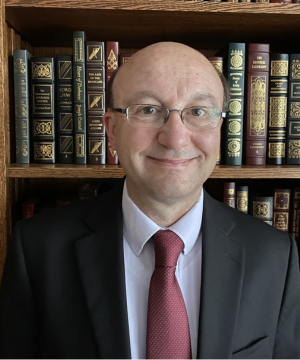Hematology
Paroxysmal Nocturnal Hemoglobinuria
Unmet Therapeutic Needs in Paroxysmal Nocturnal Hemoglobinuria
It pains me that we still have delays in the diagnosis of PNH because, in principle, making a diagnosis is not difficult. PNH is an important consideration in patients with hemolytic anemia who are Coombs negative and have an elevated lactate dehydrogenase level. Patients can be tested for PNH with flow cytometry very easily in many laboratories. Given the implications of the disease, we cannot afford to miss a diagnosis of PNH, regardless of how rare it is. If something is rare, we often feel that we do not need to think about it, but that creates situations in which clinicians do not consider the diagnosis.
An unmet need for therapy is that we cannot cure PNH in the absence of a bone marrow transplant. However, with the advent of so many new and effective therapies, we are not transplanting many patients anymore in the absence of aplastic anemia. It is possible that, someday, we will be able to give therapy very infrequently or perhaps just once, like gene therapy, and that will cure patients. Currently, patients often continue to have symptoms and social dysfunction despite receiving treatment. Many patients are unable to participate in social events or do anything after work, and some individuals may be unable to work because they often have to take care of their illness and have frequent Emergency Department visits and hospitalizations. Some patients remain transfusion dependent.
The time to diagnosis is still an issue, and that is hard to grapple with. Most patients go to their primary care provider when they develop symptoms, but their provider may have never seen or may have only briefly heard of PNH when they were in medical school. So, the diagnosis in these patients will often be delayed as they are sent to various specialists until somebody finally looks at the clinical picture, sees that they are hemolyzing, and sends them to a hematologist. Even then, not all hematologists have experience with PNH, so it is very important to educate physicians about it.
Regarding unmet needs in treatment, there is not a perfect drug for treating PNH yet. We do not have curative therapy other than stem cell transplant, so patients receive treatment for a lifetime no matter which drug we choose. We still see problems with ongoing fatigue and extravascular hemolysis with C5 inhibitors and breakthrough hemolysis with all the agents. Thus, we do not have a perfect treatment, and we cannot yet tell who will respond best to what treatment either. This makes it difficult for us to recommend one treatment over another. We have to discuss all the available agents with the patient and ask them which one they would be interested in, given the side effects, the route of administration, and their insurance coverage.
Since we do not know the mechanisms of thrombosis and bone marrow failure, we cannot alter the natural course of PNH. We do not address the deficiency of complement inhibitory proteins on cell surfaces. Red blood cells, white blood cells, neurons, and almost every cell type in the body are all affected by the activation of the complement cascade. Several organs and tissues have unregulated complement activation too. Thus, while we regulate complement very well in the blood, what happens inside the organs that do not control complement activation?
There was—and still is—a belief that complement inhibitors prevent thrombosis, but they only reduce the risk; patients receiving a complement inhibitor still may develop thrombosis. This tells us that we do not completely understand the mechanisms of thrombosis.
Another critical unmet need is cost toxicity to patients, as these drugs are costly, and many patients have difficulty continuing long-term treatment because of the costs and insurance company resistance. I think it is imperative that we develop cheaper alternatives for the available drugs.
Dingli D, Matos JE, Lehrhaupt K, et al. The burden of illness in patients with paroxysmal nocturnal hemoglobinuria receiving treatment with the C5-inhibitors eculizumab or ravulizumab: results from a US patient survey. Ann Hematol. 2022;101(2):251-263. doi:10.1007/s00277-021-04715-5
Dingli D, Rizio AA, Broderick L, et al. Health-related quality of life and symptom-specific functional impairment among patients treated with parenterally administered complement inhibitors for paroxysmal nocturnal hemoglobinuria [abstract 5126]. Abstract presented at: 65th American Society of Hematology Annual Meeting and Exposition; December 9-12, 2023; San Diego, CA.
Gavriilaki E, Brodsky RA. Complementopathies and precision medicine. J Clin Invest. 2020;130(5):2152-2163. doi:10.1172/JCI136094
Gavriilaki E, de Latour RP, Risitano AM. Advancing therapeutic complement inhibition in hematologic diseases: PNH and beyond. Blood. 2022;139(25):3571-3582. doi:10.1182/blood.2021012860
Panse J, Sicre de Fontbrune F, Burmester P, et al. The burden of illness of patients with paroxysmal nocturnal haemoglobinuria receiving C5 inhibitors in France, Germany and the United Kingdom: patient-reported insights on symptoms and quality of life. Eur J Haematol. 2022;109(4):351-363. doi:10.1111/ejh.13816
Partnering4PNH. A global policy consensus paper to address remaining unmet medical needs for people living with PNH. 2022. Accessed August 21, 2024. https://pnh.sobi.com/sites/default/files/P4PNH-consensus-paper-short-version%20-%2015.12.2022%20.pdf
Sicre de Fontbrune F, Burmester P, Piggin M, et al. The burden of illness of patients with paroxysmal nocturnal haemoglobinuria receiving C5 inhibitors: clinical outcomes and medical encounters from the patient perspective. Hematology. 2022;27(1):1140-1151. doi:10.1080/16078454.2022.2127630
Waheed A, Shammo J, Dingli D. Paroxysmal nocturnal hemoglobinuria: review of the patient experience and treatment landscape. Blood Rev. 2024;64:101158. doi:10.1016/j.blre.2023.101158
Warwick CA, Keyes AL, Woodruff TM, Usachev YM. The complement cascade in the regulation of neuroinflammation, nociceptive sensitization, and pain. J Biol Chem. 2021;297(3):101085. doi:10.1016/j.jbc.2021.101085













